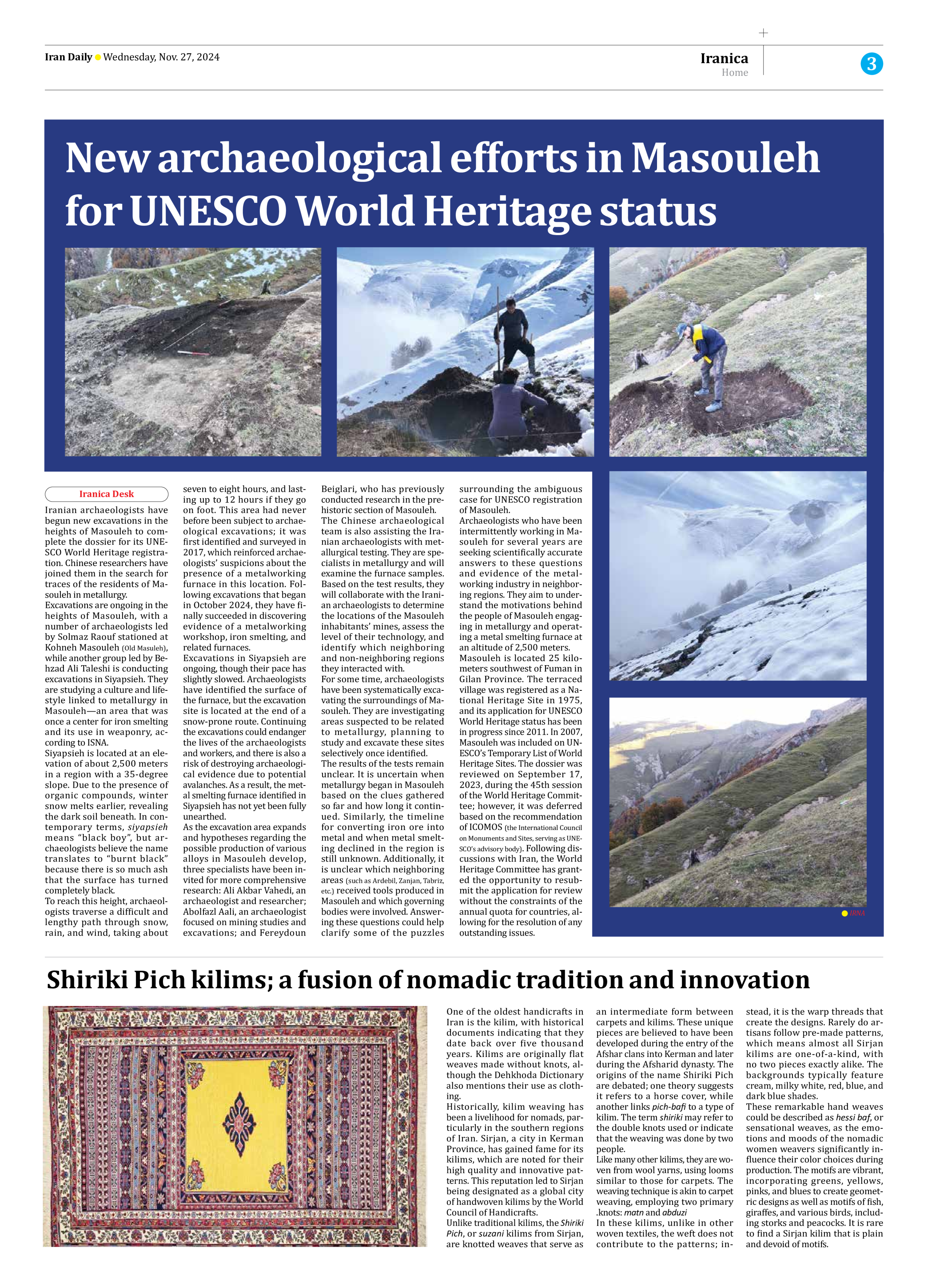
Copy in clipboard...
Shiriki Pich kilims; a fusion of nomadic tradition and innovation
Historically, kilim weaving has been a livelihood for nomads, particularly in the southern regions of Iran. Sirjan, a city in Kerman Province, has gained fame for its kilims, which are noted for their high quality and innovative patterns. This reputation led to Sirjan being designated as a global city of handwoven kilims by the World Council of Handicrafts.
Unlike traditional kilims, the Shiriki Pich, or suzani kilims from Sirjan, are knotted weaves that serve as an intermediate form between carpets and kilims. These unique pieces are believed to have been developed during the entry of the Afshar clans into Kerman and later during the Afsharid dynasty. The origins of the name Shiriki Pich are debated; one theory suggests it refers to a horse cover, while another links pich-bafi to a type of kilim. The term shiriki may refer to the double knots used or indicate that the weaving was done by two people.
Like many other kilims, they are woven from wool yarns, using looms similar to those for carpets. The weaving technique is akin to carpet weaving, employing two primary knots: matn and abduzi.
In these kilims, unlike in other woven textiles, the weft does not contribute to the patterns; instead, it is the warp threads that create the designs. Rarely do artisans follow pre-made patterns, which means almost all Sirjan kilims are one-of-a-kind, with no two pieces exactly alike. The backgrounds typically feature cream, milky white, red, blue, and dark blue shades.
These remarkable hand weaves could be described as hessi baf, or sensational weaves, as the emotions and moods of the nomadic women weavers significantly influence their color choices during production. The motifs are vibrant, incorporating greens, yellows, pinks, and blues to create geometric designs as well as motifs of fish, giraffes, and various birds, including storks and peacocks. It is rare to find a Sirjan kilim that is plain and devoid of motifs.







